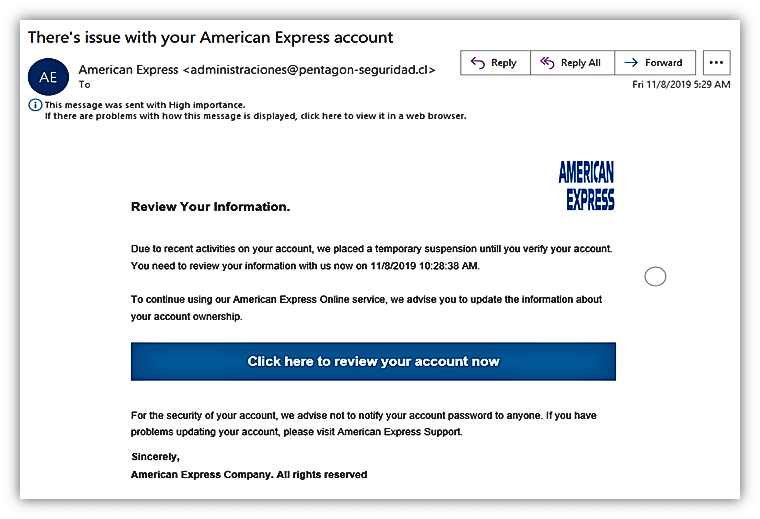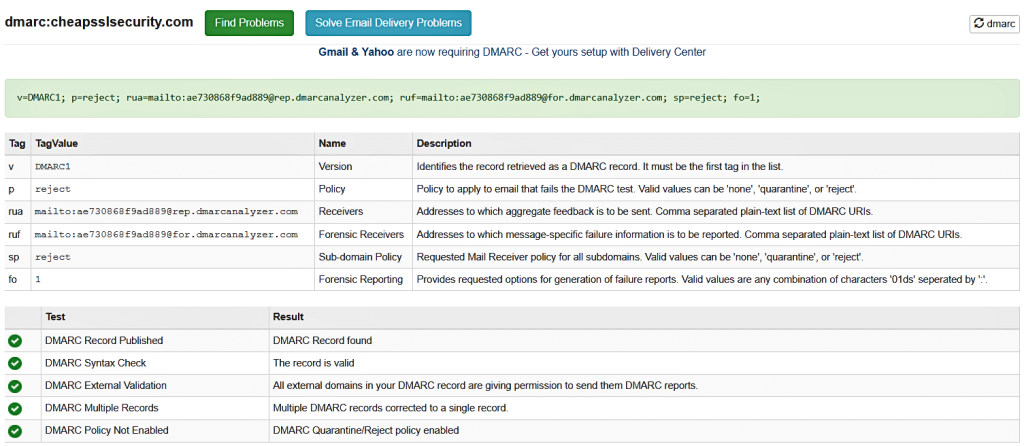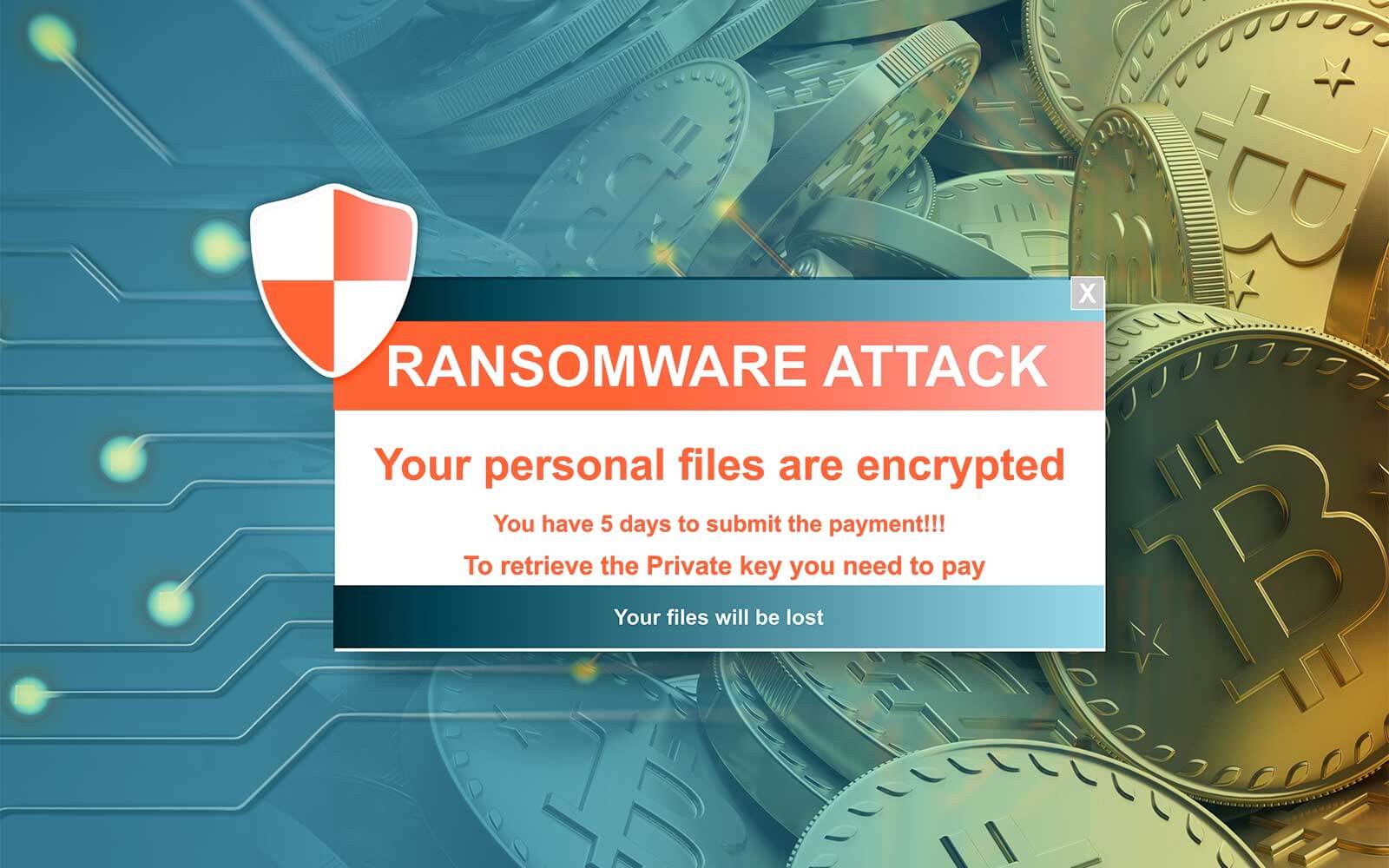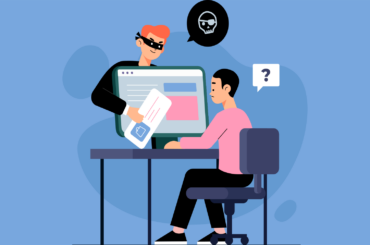In 2023, 66% of organizations surveyed for the Sophos State of Ransomware report experienced a ransomware attack. This figure mirrors the previous year, spotlighting a sustained high level of risk in the ransomware landscape that’s especially relevant to small businesses.
As small businesses continue to embrace technology, they are also faced with a growing threat: ransomware attacks. Often overshadowed by high-profile attacks on large corporations, small business ransomware is a pernicious threat that can cripple unprepared SMBs. Unlike larger entities, small businesses typically lack the robust cybersecurity infrastructure needed to withstand these attacks, making them attractive targets for cybercriminals.
Despite the rising threat, only half of U.S. small businesses have a cybersecurity plan to aid in the event of a ransomware attack or other cyber incidents, leaving them vulnerable and unprepared. This stark reality underscores the importance of proactive measures. Without them, the impact of small business ransomware attacks is not just a temporary disruption; it can spell the end for many SMBs.
As SMB ransomware evolves, understanding its mechanics and consequences is not only beneficial but imperative for the survival and resilience of small businesses. This article sheds light on the nuances of SMB ransomware and its significant impact on small businesses, offering insights into how SMBs can prepare for and respond to these threats.
What Is SMB Ransomware and How Does It Work?
Ransomware is a type of malware that encrypts data on computers and networks so bad guys can demand a ransom for its decryption. And as you’ve probably guessed, SMB ransomware is that which targets small- and medium-sized businesses specifically. It often infiltrates businesses and companies through phishing attacks, weak remote protocols, or software vulnerabilities. SMB ransomware attacks affect not only computers but also smartphones and internet-connected devices.
Additionally, ransomware can activate through security flaws without direct user interaction, especially in older or unpatched systems. Upon infiltration, it proceeds to encrypt files and subsequently demands payment, often in cryptocurrency, to decrypt them.
Understanding the broad scope of ransomware’s attack vectors and consequences is vital for effective prevention and response, for which you must continue with this article.
How Ransomware Works
Once ransomware infects a system, it executes a predictable but harmful process. It encrypts specific file types and spreads across the network, disabling systems and installing a ransom note demanding payment. Some SMB ransomware attackers even threaten to release sensitive data if the ransom isn’t paid, a tactic known as double extortion.
The scope of data and systems encryption can vary, sometimes locking down a single endpoint system or devices across an entire network.
On this note, here is a comprehensive list of cybersecurity strategies to defend against small business ransomware attacks.
15 Cybersecurity Strategies to Defend Against Ransomware Attacks
This section breaks down strategies into three core areas:
- Fostering a security-centric culture to strengthen your “human firewall.”
- Implementing preemptive cybersecurity and data safeguards to prevent SMB ransomware.
- Determining how you will respond if/when things go wrong (i.e., you suffer a ransomware attack).
These strategies aim to help you prevent SMB ransomware attacks from happening and fight back when they do occur.
Strengthen Your “Human Firewall” Defenses
The key to fighting SMB ransomware is not just having the right technology; it’s also about the people you have on your side. To defend against this type of threat, selectively hire, continuously train, and create a security-aware culture for your employees and other network users. These steps are essential for solid ransomware defense.
1. Build a Pre-Employment Strategy for Ransomware Defense
A strong pre-employment protocol is integral to a comprehensive ransomware defense strategy. It should extend beyond standard background checks to include an analysis of behavioral patterns that could indicate a susceptibility to external influence.
This critical evaluation, taking into account factors like financial pressure, equips an organization to proactively identify and mitigate insider threat risks. Such measures are fundamental in safeguarding your business’s cyber integrity from the very start of an employee’s journey, ensuring a secure and resilient digital infrastructure.
2. Provide Continuous Cybersecurity Education to Employees
Verizon’s 2023 report reveals that 74% of breaches involve human influences, highlighting the critical need for leaders to grasp the risks tied to human error in cybersecurity and to develop strategies accordingly to mitigate these risks.
Regular employee training is essential to mitigate the risk of inadvertent security lapses. Emphasize the role of human error in cybersecurity, as highlighted by significant statistics from credible sources like Verizon’s reports. Practical training should emphasize real-world scenarios, like identifying phishing attempts and keeping software up to date.
Here are a few quick examples of how these situations can play out:
- Phony emails with malicious attachments or links to malicious websites can infect your device with ransomware.
- Fake login and password reset alerts may direct you to fraudulent websites that can steal your login credentials and install ransomware.
- Impersonated legal notices urging you to take action can be used to install ransomware on your device.
- Malware disguised as legitimate software updates can install ransomware on your device.
Notice a pattern? Training in this area can primarily support your defenses against hacking and malware threats.

Image caption: Example of a phishing email impersonating American Express to solicit sensitive information.
3. Foster a Security-Conscious Culture Within Your Organization
Cultivating a security-aware culture is more than having a policy; it’s about creating an environment where employees actively participate in the cybersecurity process. This involves detailed education on potential threats, regular updates on new security protocols, and an open dialogue that encourages reporting suspicious activities.
By engaging every team member in protecting the organization’s digital assets, businesses can create a more vigilant and responsive defense against cyber threats.
Implement Preemptive Data Protection and Analysis
The 2023 Unit 42 Ransomware Extortion report indicates a significant shift in ransomware attacks: data theft occurred in about 70% of cases in late 2022 compared to just 40% in mid-2021. This trend underscores the increasing combination of ransomware and data theft,which poses a heightened threat to small businesses.
To protect themselves against ransomware attacks, small and medium businesses should implement core data security measures such as
- system hardening,
- planning and patching,
- web and network security, and
- keeping their software apps and systems current.
Let’s discuss each of these practices:
4. Build a Strong Frontline with System Hardening
To reduce vulnerabilities, implement a comprehensive and cohesive system-hardening approach across networks, servers, applications, databases, and endpoints. Regularly update to the latest versions of software and firmware to mitigate ransomware risks and other potential exploits, utilizing patches and including security updates for firewalls.
Alongside the usual updates and patches, a good practice is to employ application whitelisting and enable built-in security features such as Microsoft Defender. Also, consider using a hardware trusted platform module (TPM) to store the keys needed for disk encryption and secure boot to prevent unauthorized code execution during system startup.
5. Conduct Regular Software Updates and Patch Management to Mitigate Vulnerabilities
Stay ahead of evolving ransomware threats through consistent software updates and patch management. Again, small businesses with limited IT resources should prioritize patches based on risk assessment. This involves regularly assessing and updating systems, with a focus on patches that address high-severity vulnerabilities first.
Also, keeping software updated and prioritizing patches based on risk assessments can help maintain system integrity and prevent known vulnerabilities from being exploited. For example, applying updates like Microsoft’s Patch Tuesday releases, which often include fixes for critical security flaws, can be crucial. Automating this process through tools like Windows Server Update Services (WSUS) or third-party management software can streamline operations, ensuring the timely application of vital patches.
6. Gauge Your Ransomware Defense Readiness Regularly
Regularly testing your organization’s readiness for ransomware attacks is important to ensure that your prevention strategies, systems, and processes are effective. You should perform timely penetration testing to detect vulnerabilities in your security measures and improve your defenses.
Additionally, comprehensive testing and drills can help you prepare for ransomware attacks. For example, simulated phishing exercises can evaluate your employee readiness and your system’s robustness against social engineering attacks.
7. Protect Your Endpoints from Emerging Threats
Leverage endpoint detection and response (EDR) solutions to keep a watchful eye on network and endpoint activities in real time. These tools excel at catching and quarantining ransomware before it spreads, safeguarding your infrastructure. Enhance their capability by pairing them with antivirus software, digging deeper into incidents to swiftly neutralize threats.
Step up your security measures with state-of-the-art anti-virus and anti-malware software and updated firewalls. Be sure to introduce DNS firewalls for an extra layer of defense. This holistic approach actively screens all device traffic, effectively cutting off phishing attacks, which are common gateways for ransomware breaches.
8. Control Access to Keep Your Data Safe
In aligning with a zero-trust security framework, it’s essential to establish a system where access is not just restricted but continuously verified. Multi-factor authentication (MFA) and identity and access management (IAM) systems are at the heart of this approach, confirming that users are who they claim to be and have just enough access to perform their job functions — no more, no less. This necessitates the initial validation of credentials and ongoing scrutiny of user behavior and access patterns.
The principle of least privilege (PoLP) should be a guiding policy, ensuring that employees have access only to the information and resources essential for their roles. This can be effectively managed through Role-Based Access Control (RBAC) policies, which offer granular control over permissions and facilitate the monitoring and auditing users’ activities to ensure compliance with the security protocols.
In practice, this means limiting file access to what is necessary for each employee, regularly reviewing access permissions, and revoking them as soon as they are no longer required. Software Restriction Policies (SRP) complement this approach by preventing employees from using applications or accessing data that are not pertinent to their duties, thereby minimizing the internal avenues through which ransomware can propagate.
9. Segment You Network and Strengthen Its Weak Spots
Have you ever considered dividing your network into manageable sections? Segmenting your network confines threats to one area, preventing them from spreading. This step protects your key data and operations from ransomware.
Additionally, monitoring network traffic for unusual patterns allows early detection of intrusions. This prompt identification enables a swift response, effectively isolating and resolving the issue.
To further reinforce security levels, optimize your firewall and router settings. Disable unnecessary services and ports, and implement network access control (NAC) to improve network segmentation. These measures help isolate potential ransomware threats and protect critical network segments. Businesses should also enforce secure protocols and restrict access to only verified, authenticated devices.
10. Maintain Strong Email and Web Security Structure
Email filters and antivirus scanning tools are useful for protecting your employees’ inboxes from ransomware messages. But with ransomware threats on the rise, it’s necessary to adopt effective email authentication protocols to help keep bad guys from spoofing your domain while communicating with your staff and clients through emails.
Domain name system (DNS) records help you ensure that only verified emails come through and reduce the likelihood of ransomware intrusions. Here are the key protocols that deter deceptive email practices and strengthen defenses against email threats.
- Sender Policy Framework (SPF): Verifies the sender’s domain by matching the mail server’s IP address with the authorized list in the DNS records.
- DomainKeys Identified Mail (DKIM): Provides an encrypted signature to confirm email content is genuine and unmodified, keeping the trust in email interactions.
- Domain-based Message Authentication, Reporting, and Conformance (DMARC): Uses SPF and DKIM to prevent domain spoofing and block unauthenticated emails.

Image caption: A screenshot example of CheapSSLsecurity.com’s DMARC record, captured using MXToolbox.com.
11. Ensure Secure Connections in the Age of Remote Work
Remote work calls for secure access points. Rely on virtual private networks (VPNs) with built-in encryption to keep out unwanted eavesdroppers who want to intercept and steal your data in transit. Always look for odd patterns in remote access logs — it’s essential for catching issues early on. Firm up your defense with compulsory multi-factor authentication and strong passwords.
SSL/TLS security doesn’t apply only to your public website — make sure you’re also covering other internal and external channels with it, too. Using SSL/TLS protocols for emails and internal apps keeps your data safe and sound, preventing snoopers from getting their hands on sensitive information. This step is especially effective at stopping hackers from slipping in ransomware or spying on your data as it moves around your network.
12. Use Data Encryption to Protect Sensitive Information at Rest (Including Data Backups)
Encrypt your data at every stage — whether it’s in transit, at rest, or as part of your backups — to ensure comprehensive protection. We’ve already discussed the first (at-rest encryption); now, it’s time to focus on the others.
Encrypting data at rest within your databases and servers makes it unreadable without the correct decryption key. This method ensures data remains secure, even in the event of a breach.
Likewise, apply the same stringent cryptographic security measures to your data backups. Store these encrypted backups in various locations and formats, such as:
- Saving on cloud services,
- Using external hard drives, or
- Storing on dedicated backup servers.
This strategy secures your information and ensures you have multiple recovery options, maintaining resilience across your operations.
IBM recommends a data encryption solution with access control that restricts unauthorized access to sensitive data, making it unreadable even if exfiltrated.
Figure Out How to Respond When Things Go Wrong
We realize that small businesses may have limited resources to protect themselves against ransomware attacks and may not be able to afford high-end systems. This is why many companies turn to a managed security services provider (MSSP) to serve in this capacity. However, there are still some basic things you can do to protect your organization and its data.
13. Craft Your Ransomware Business Continuity and Incident Response Playbook
Develop detailed incident response and business continuity plans that account for potential ransomware attacks. Include roles and responsibilities, communication protocols, and steps for containment and recovery, and ensure you’ve covered checklist items from the joint CISA/FBI/NSA/MS-ISAC Ransomware Response Checklist.
Perform regular drills to ensure team preparedness. For a comprehensive incident response plan for ransomware attacks, consider implementing an effective incident management system to streamline your team’s response actions.
To further enhance your response plan, integrate automated threat detection tools (or hire a company that can manage them for you) to swiftly identify and flag incidents. This will help your response team act faster and more efficiently. Regularly practicing scenarios with these tools can keep your team adept at responding to real incidents.
14. Establish a Data Recovery Plan
Maintaining current, high-quality backups serves as a countermeasure to ransomware, allowing businesses to restore their data without paying the ransom, effectively undermining the attackers’ leverage. Advocate for the 3-2-1 backup rule and the critical role of regular, secure backups in a robust ransomware defense, especially for resource-limited small businesses.
Implementing the 3-2-1 backup rule with a mix of physical and geographically diverse cloud storage enhances your disaster resilience. And encrypting your backups renders data inaccessible to ransomware attackers, neutralizing their leverage.
15. Consider Ransomware Insurance for Financial Security
Ransomware insurance may be a wise idea for some organizations. Investing in ransomware insurance is particularly important for businesses demonstrating robust and tested ransomware defense plans.
When considering ransomware insurance, look for policies that cover the ransom and ancillary costs such as business interruption, data recovery, and even public relations efforts that may be necessary after an attack. It’s advisable to choose insurers that provide better terms for companies that have strong preventive measures in place.
However, obtaining ransomware insurance is becoming more challenging and expensive, especially for businesses that can’t demonstrate a robust and tested ransomware and data protection plan. In fact, some cyber insurance providers are now terminating policies for businesses that can’t produce a sound ransomware prevention plan.
All in all, ransomware is an ever-evolving threat to businesses that comes in various forms, each requiring specific strategies for protection, as listed above.
Overconfidence Leaves Businesses Vulnerable to SMB Ransomware
Ransomware attacks have become more common and noticeable recently, and the risk of being a target of such attacks has increased. In fact, according to the latest data, approximately 5,200 cases were reported in 2023 alone (although Rapid7 expects that the true number is higher due to unreported attacks). But how much do ransoms usually cost? Coveware reports an average ransom payment cost of $850,700.
Despite the rise in ransomware attacks, many organizations still believe their cybersecurity measures are sufficient to protect them. According to the Fortinet 2023 Ransomware Report, 78% of organizations surveyed felt that they were well-prepared to handle ransomware attacks. However, despite their positive sentiments and confidence, the same report revealed that half were compromised by ransomware attacks.
This finding suggests that while many organizations may believe that they are protected from ransomware, they may not be fully aware of the extent to which their security measures are vulnerable to attack. This underscores the need for small businesses to regularly evaluate and enhance their cybersecurity defenses to better protect against the threat of ransomware.
What Are the Consequences of Small Business Ransomware Attacks?
Cyber attacks, especially those involving ransomware, are not just temporary setbacks for small businesses. They can cause deep-rooted damage that can leave a long-lasting imprint on your organization’s financial health and reputation. The aftermath of an SMB ransomware attack can extend beyond data loss to include reputational damage and legal ramifications.
Here’s a taste of some of the potential outcomes:
- Ransomware takes a heavy toll on your bottom line: In 2023, small businesses felt the brunt of ransomware, shelling out over $1 billion in ransom payments. The total cost, when factoring in other costs (e.g., downtime, remediation, data losses, recovery, etc.), results in costs far beyond that.
- The integrity of your data remains questionable post-recovery: Even after you’ve managed to recover your data, the reliability of restored files remains in question. This uncertainty can disrupt everything from customer service to compliance, creating vulnerabilities across the board.
- Operational shutdowns are costly post-hit: Ransomware attacks can bring business to a halt, as seen with JBS Foods. These incidents not only stop production but can also lead to layoffs and severe operational challenges.
- Achieving full recovery is a seldom-realized goal: Following a ransomware attack, getting back to where you were is often unattainable, leaving businesses to face ongoing challenges without access to all their critical data.
- Ransomware erodes customer trust and relationships: When breaches occur, customers’ trust in you as a trustworthy and reliable provider deteriorates rapidly. A notable incident at Puma in 2022 compromised sensitive employee data, severely damaging the company’s reputation.
- Public ransomware disclosures erode brand integrity: The public revelation of ransomware attacks can significantly damage a brand’s integrity even further. KP Snacks’ experience in the United Kingdom is a testament to how such disclosures can erode trust and tarnish a company’s image.
- Ransomware takes a significant emotional toll on employees: The emotional fallout from ransomware attacks is significant, with increased stress and anxiety among employees, which could adversely affect their performance and health.
Should You Pay a Ransom? U.S. Authorities Say No
We also must mention that the FBI (as well as other agencies) advises against paying ransomware operators, noting that such actions may lead to OFAC-led sanctions for businesses. Moreover, despite the temptation to pay the ransom to regain access, it is important to understand that payments do not always guarantee data recovery.
Paying a ransom can encourage further attacks (by the same group or other ransomware groups) once bad guys realize you’re willing to pay.
Wrapping Up Small Businesses Ransomware Attacks
Data from the OpenText Cybersecurity 2023 Global Ransomware Survey shows that three in five small businesses often don’t see themselves as likely ransomware targets. Yet their perceived invulnerability can make them more appealing to attackers.
To remain a step ahead of hackers, it’s time to critically assess your current security protocols and make any necessary updates. This includes implementing strong encryption across your network(s) and larger IT ecosystem.
Have a defense plan and strategies in place to ensure your cyber defenses are robust and agile. A good starting point reviewing resources from the Cybersecurity & Infrastructure Security Agency (CISA) and the National Institute of Standards and Technology (NIST).
Fortifying your small business against ransomware attacks is an ongoing process that requires a blend of education, strategy, and advanced cybersecurity solutions. This proactive stance protects your business and its data; it also reinforces the trust and confidence of your customers and business allies.





